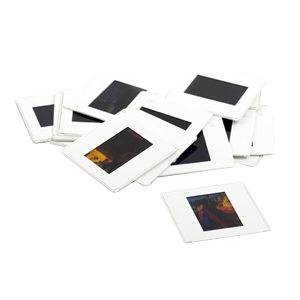As technology progresses, we’re constantly switching out the old for the new. Well, as everyone already knows, this also applies to your family media such as video and audio tapes. There’s been so many different tape formats and shifts of technology over the years, it’s hard for anyone to keep track of the model names or equipment needed to play their old video tapes. Hopefully this list of video tape formats will help you figure out exactly what kind of tape you have, so you can give yourself a better idea of how to proceed. The chart below lists the various tape formats of audio we can transfer to CD or hard drive. While not as complicated as the multiple types of video tapes, it can still often be confusing as to what exactly you’re looking at.
| Microcassette | -Introduced by Olympus in 1969 -Smaller than a standard audio cassette -Typically used for voice recordings and home answering machines |  |
| Audio Cassette | -Format developed by Phillips and released in 1963-1964 -Most popular audio recording medium for consumers until the development of CDs |  |
| Reel to Reel | -Developed in the 1940s -Can be recorded and played at various speeds. |  |
| LP/Vinyl Record | -One of the earlier recording mediums as it was developed in the late 1800s -Could be played at various speeds, still popular to this day. |  |
List of supported video tape formats.
| MiniDVD | -DVD disc having 8 cm (3 in.) in diameter. -Recordable 8 cm discs are commonly used in DVD-based camcorders. Depending on variant, these discs can offer up to 5.2 GB of storage space. |  |
| MicroMV | -MicroMVwas a proprietary videotape format introduced in 2001 by Sony. -Physically the smallest of all video tape formats, 70% smaller than a MiniDV cassette |  |
| MiniDV | -Released in 1998 as part of joint efforts of leading producers of video camera recorders. -Recorded in digital (DV) same as Digital8 -Tapes could hold 1hr SP, 90min EP |  |
| Video8, Hi8, Digital8 | -Developed through the 80s and 90s -Most popular consumer camcorder tapes through the 90s due to small form factor and higher quality than that of the VHS. |  |
| VHS-C | -Released by JVC in 1982 as a compact VHS. -The format is based on the same videotape as is used in VHS, and can be played back in a standard VHS VCR with an adapter. |  |
| VHS | -Developed by JVC and introduced in 1976. -During the late part of the 1970s and the early 1980s, the home video industry was involved in the VHS vs. Betamax war, which VHS would eventually win. |  |
| Betamax | -Developed by Sony, released on May 10, 1975. -Although generally considered the superior quality tape, Betamax lost the format war to VHS in the 80s. |  |
| 3/4″ U-Matic | -Developed by Sony, released in 1971 as a professional video tape format. -It was among the first video formats to contain the videotape inside a cassette, as opposed to the various open-reel formats of the time. |  |
| Betacam | -Developed by Sony in 1982. -The format supplanted the three-quarter inch U-Matic format, which Sony had introduced in 1971 |  |









